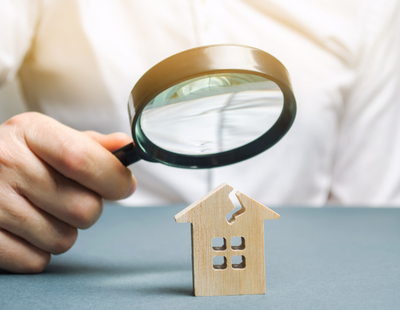
With the summer heatwave a distant memory, residents are being advised to check their properties for signs of subsidence.
While many landlords and homeowners looked for cracks during July and August, Aviva suggests now is actually a good time to review their properties, to ensure any issues are nipped in the bud. It is also a useful opportunity to take care of any maintenance issues before winter arrives.
Residents should be reassured that most cracks in houses are caused by normal movement of the property, which can be more visible after periods of hot, dry weather. Cooler temperatures and increased rainfall in autumn - as has been seen in recent weeks in the UK - can also help to reduce the chance of shrinkage and movement.
Subsidence is usually caused by a combination of a specific soil type, certain tree species and prolonged dry weather, or alternatively drainage issues throughout the seasons.
How to spot signs of subsidence
It’s important for landlords and homeowners to note that small shrinkage and movement cracks are normal after hot, dry weather, particularly in plaster and brickwork. However, people should visually monitor any new cracks.
Subsidence is a downward movement of foundations commonly due to the soil below the house drying out and shrinking. This means affected buildings will crack around the weakest parts of the wall. Typical examples of cracks that might suggest subsidence movement are as follows:
- if there are diagonal cracks in the same location inside and outside the house;
- if cracks are diagonal and appear around openings such as windows and doors;
- if doors or windows suddenly become difficult to open and close and cracks have appeared around the frames;
- if there is a large tree close to the property and the cracking suddenly appears during the summer months.
All buildings experience cracking to varying degrees and these often pose little or no risk to the structural stability of the property. However, cracks over 25mm wide (that’s roughly the diameter of a £1 coin) will require an assessment for structural integrity. If subsidence is suspected, homeowners should contact their insurer.
Sharing photos or video footage with their insurance provider can help claim assessors to evaluate enquiries. Subsidence is covered as standard under most home insurance policies.
Despite the recent uptick we’ve seen in enquiries this year, people will be relieved to discover this rarely turns out to be subsidence and dramatic interventions are not typically required. A little movement in properties is to be expected and most cracks will be superficial.
However, we would always encourage our customers to get in touch if they notice any substantial changes in their properties that might indicate subsidence. We face increasingly extreme weather conditions due to climate change, so it is far better to catch any issues early to minimise any damage and disruption.
* Kelly Whittington is director of Property Claims at Aviva UK *
We're excited to announce that we're working on building a shiny new website for readers of Landlord Today! As part of this process, commenting on articles will be temporarily disabled. We look forward to sharing our new and improved Landlord Today website with you shortly!




Landlord-400x310.png)

.jpg)
.png)

(1).png)




